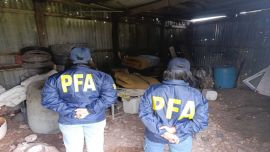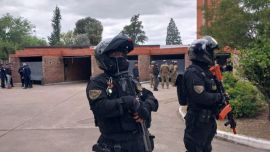Independent journalists in Mexico are reflecting on one of the worst years for their ravaged profession in living memory. In 2017, at least 10 reporters were murdered.
Hundreds more were threatened, and a culture of complicity, disinterest and fear — both among mainstream society and the money-making media — has many Mexicans simply looking the other way.
Veracruz-based reporter Gumaro Pérez became the country’s latest victim on December 19 when he was shot dead at a Christmas party at his six-year-old son’s school in Acayucan.
Pérez’s death has journalists and activist groups in Mexico concerned on a number of fronts.
In the years prior to his death, the 34-year-old had gained minor fame for his coverage of local criminal activity. But prosecutors allege he was also an operative for a regional cartel who had used his connections to infiltrate media circles and spy on his colleagues.
Two reporters in Acayucan told the Associated Press, speaking on condition of anonymity due to concerns for their safety, that they and others had received threatening calls from Pérez.
Journalist-cum-activist Daniel Pastrana recognises that some journalists in her country are working for criminal organisations and have infiltrated newsrooms. But she insists that this is only a “small minority.”
Pastrana is the director of the Periodistas de Pie activist organisation, a group composed of mostly women journalists who travel the country to highlight and address the dangers faced by those in the trade. They also offer training workshops to colleagues, including giving advice on personal safety.
“We shouldn’t lose focus on the reasons why this happens, like poverty and threats, or because they’re tempted by the money”, she says, speaking to the Times by phone from Mexico. “We try to be very careful in not attacking journalists, especially low-profile reporters, so we visit these places to check the facts.”
Pastrana says the Pérez murder is a “complex case,” one that is indicative of the situation in Mexico in general. “The value of human life has decreased so much in this country. There is no way to negotiate with these people [criminals] and it’s important to emphasise that we’re not talking just about drugtraffickers but also politicians, business- people. Essentially it could be anybody in a position of power.”
STATE FAILURES
Ravaged by corruption at all levels of government, attempts by the Mexican authorities to address the violence against reporters have so far failed.
Another reporter from Veracruz, Candido Ríos Vázquez, was shot dead in August 2017 after a relentless barrage of telephone threats to his place of work, Diario de Acayucan. The 57-yearold was reporting on local corruption. And he had been enrolled in a government programme to protect journalists.
Investigators have not linked Ríos Vásquez’s murder to his work as a journalist, however, a trend Pastrana says applies to every investigation into a journalist’s death to date.
“These investigations don’t convince anybody. The prosecution investigates whether the person had family problems or an existential crisis, but never his or her work.” Pastrana says that there is clear evidence that shows that criminal organisations have infiltrated national and state bodies, including those charged with offering protection to journalists.
“Information filters out of the Attorney General’s Office, which receives information about the threats and should protect the journalist. But then the journalist gets a threatening call saying: ‘We know you’ll be testifying tomorrow at such-and-such a time. You can decide whether or not you want to do that.’”
GAG LAW
In the last five years, US$2 billion flowed from Mexico’s national government coffers into publicity and advertising. Similar financial arrangements exist between politicians and the media across all levels of government.
High-profile cases in 2017, like the murders of Javier Váldez and Miroslava Breach — both of whom were investigating high-level corruption at the times of their deaths — not only highlight the risks that journalists in Mexico are facing, but the extent to which violence, as a means of control, has taken root within the country’s institutions.
The horizon for 2018 doesn’t look much brighter than 2017’s. Journalists and rights groups are increasingly concerned about a proposed ‘gag law’ which would impose hefty fines on reporters or citizen journalists accused of jeopardising another person’s honour, even if the information broadcast or published is true.
In Mexico, there has been little in the way of resistance to the proposed legislation. The mainstream media is falling short, Pastrana says, not only in its indifference toward the situation facing Mexican journalists in general, but by responding to the pressures imposed by the government or advertisers, some of whom have their own shady connections to the country’s underworld.
Pastrana, however, has faith. “I’m hopeful about the rise of truly independent journalism in Mexico as a response to what has happened,” she concludes. “Journalists are not just pawns for power, and we have to fight against this as much as we can.”

























Comments